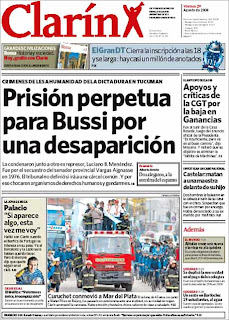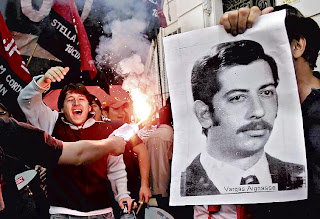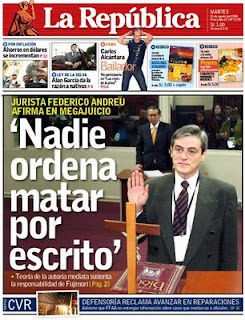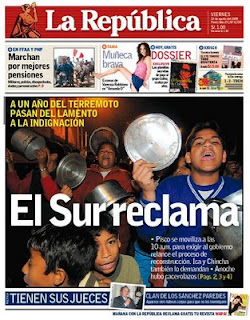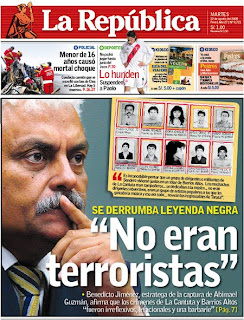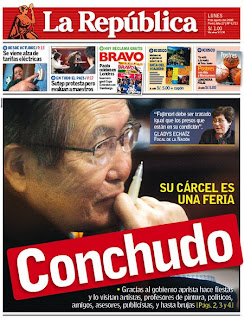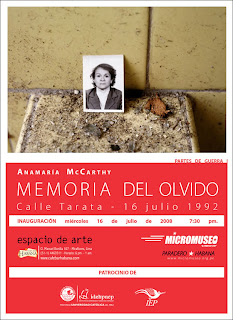 The former commissioners of the Truth and Reconciliation Commission are coming in for further criticism from various quarters.
The former commissioners of the Truth and Reconciliation Commission are coming in for further criticism from various quarters.Let's get this straight; a legitimately-elected government decided on the need for a TC, it appointed the commissioners, it received and accepted the final report. Were the recommendations implemented? To a large extent, no. The report is good on paper (indeed, it is very good, you can read it in English and Spanish here) but in practice, little has changed. Note that the report apportioned almost as much blame to the Peruvian armed forces and police as to the guerrilla groups. Obviously, certain people don't like to hear that.
Now, five years on, voices are coming from the government saying that the commissioners need to keep quiet about the continuing lack of progress in implementing the report's recommendations; well, I don't know, but I imagine that if you've heard all those testimonies which led you to come to the conclusion that you are dealing with the murder of 70,000 people, it's not so easy to just forget about it.
Now Cardenal Juan Luis Cipriani has added his criticism to the mix. During a sermon on the occasion of the festival of Santa Rosa de Lima (patron saint of Lima, and indeed Latin America), he stated:
"It has become fashionable in the past few years to attack the armed forces and the police. Therefore, today we ask Santa Rosa for help, that our Fatherland accepts the presence of a member of the police and some of the armed forces with respect, with gratitude, without ideology and without hate. Human rights are too important to be left in the hands of a small ideological group."
Cipriani entra a debate sobre CVR y defiende a las FF.AA (Peru21)
Wikipedia has a good summary of Cipriani's political views here.

